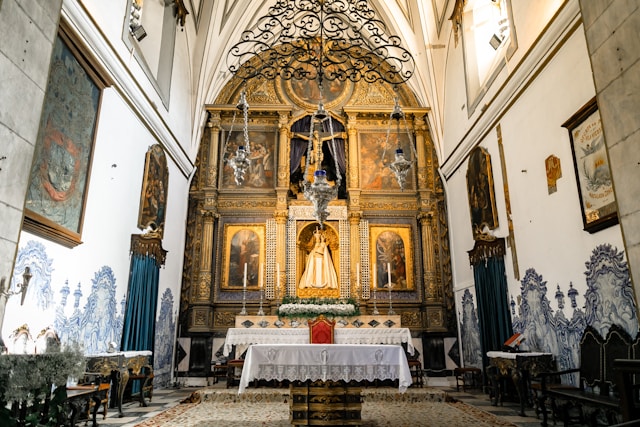Your cart is currently empty!
Ta’ Pinu: The Heart of Gozo’s Religious Landscape

Introduction
Ta’ Pinu, a magnificent neo-Romanesque basilica nestled on the vibrant island of Gozo, holds a sacred place in the hearts of the Maltese and beyond. With its ethereal beauty and profound spiritual significance, Ta’ Pinu stands as a testament to the deep-rooted faith of the Gozitan people. Join us as we embark on a pilgrimage to uncover the captivating history, architectural marvels, and spiritual essence of this beloved shrine.
A Tapestry of History
The origins of Ta’ Pinu are shrouded in legend, with tales of miraculous apparitions and divine interventions. In the mid-16th century, a young woman named Karmni Grima experienced a series of visions of the Virgin Mary, who instructed her to build a church on the site. Despite initial skepticism, the bishop of Gozo eventually granted permission, and construction began in 1920.
The church’s design was entrusted to renowned Maltese architect Lorenzo Gafà, who envisioned a blend of neo-Romanesque and Byzantine elements. The result is a breathtaking masterpiece, characterized by its imposing façade, soaring bell towers, and intricate stonework. Ta’ Pinu was consecrated in 1931 and elevated to the status of a minor basilica in 1932.
Architectural Splendor
Ta’ Pinu’s facade is a symphony of limestone and sandstone, adorned with elaborate carvings and sculptures. The central portal features a tympanum depicting the Assumption of the Virgin Mary, while the upper portion is graced by intricate rose windows and a series of arched niches. The two towering bell towers, adorned with elegant louvers and pinnacles, provide a majestic frame for the basilica’s silhouette.
Inside, Ta’ Pinu unfolds as a spacious and awe-inspiring sanctuary. The vaulted ceiling is supported by twelve monolithic columns, symbolizing the twelve apostles. The walls are lined with side altars dedicated to various saints, each adorned with exquisite paintings and sculptures.
A Haven of Devotion
Ta’ Pinu is not merely a architectural marvel; it is a hub of religious devotion and pilgrimage. Thousands of pilgrims flock to the basilica every year, seeking solace, healing, and divine guidance. The shrine houses a venerated statue of the Virgin Mary, known as Our Lady of Ta’ Pinu, which is believed to have miraculous powers.
Throughout the year, Ta’ Pinu hosts a series of religious festivals and events, including the annual feast of the Assumption of the Virgin Mary in August. During these celebrations, the basilica reverberates with the sound of music, prayer, and the collective spirit of the faithful.
Spiritual Significance
Ta’ Pinu transcends physical beauty and architectural grandeur; it is a profound symbol of the spiritual bond between the people of Gozo and the divine. The basilica is a place of pilgrimage, prayer, and reflection, where countless souls have found solace, hope, and renewal.
The statue of Our Lady of Ta’ Pinu is particularly revered by the Maltese and Gozitans, who believe in her intercession and protection. She is often invoked in times of need, illness, and adversity, and her image graces countless homes and churches throughout the Maltese Islands.
Practical Information
Ta’ Pinu is located in the village of Għarb, on the western coast of Gozo. It is accessible by public transportation or by car. Ample parking is available in the vicinity of the basilica.
The basilica is open to visitors daily, from morning until evening. Mass is celebrated several times each day, and there are regular tours available for those who wish to delve deeper into the history and significance of the shrine.
Conclusion
Ta’ Pinu is a beacon of faith, a sanctuary of hope, and a testament to the enduring power of spirituality. Its captivating history, architectural splendor, and profound spiritual essence make it a destination of immense significance for pilgrims, tourists, and believers alike. Whether you seek solace, inspiration, or simply a glimpse of the Maltese Islands’ rich cultural heritage, Ta’ Pinu awaits you with open arms.